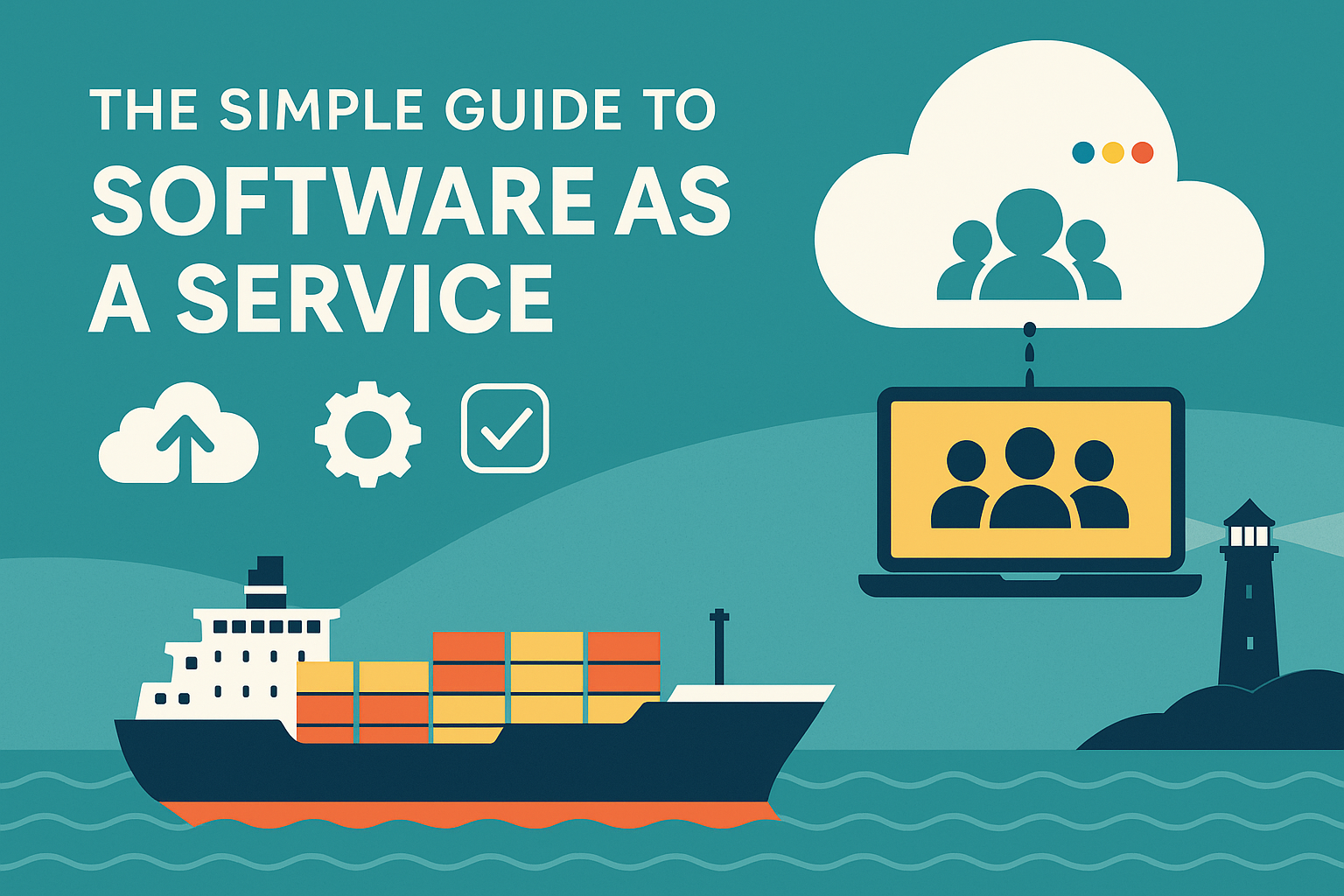11 Ways to Build Collaborative Teams in Maritime Recruitment

You’ve probably heard the phrases “there’s no I in team” or “there’s no I in teamwork” and we all understand that to mean that if someone in the workplace is constantly saying “I did this…” or “I did that…” that they’re probably not a great team player.
So why should that bother us?
After all, as long as someone is getting the job done, surely it doesn’t matter whether it was done by one person or five?
Not true. It’s been shown that companies whose teams collaborate and work together are generally proven to be more productive, motivated, efficient and highly functioning.
And that goes for whether it’s a group of people working in maritime recruitment, your crew managers, your accounting department or your sales team.
So if a small to medium sized shipowner or manager wants to get the most from their people to increase their time to hire, boost their crew retention rates, get seafarer documents checked more quickly yet more thoroughly, and schedule interviews in a timely fashion, what do they need to do?
They need to encourage collaboration.
Read more: 5 Ways to Accelerate Your Time to Hire in Maritime Recruitment
But that can be easier said than done - especially if you’re managing a team who isn’t particularly given to working as a cohesive whole.

What are the benefits of team collaboration in maritime recruitment?
As well as speeding up your crew planning processes and maritime recruitment ops, as mentioned above, when your teams effectively collaborate among themselves there are additional benefits.
For example, when people are working together, it results in higher productivity since efficient teams can finish tasks more quickly and meet deadlines and crew changes - all of which help your company save time and money.
Higher employee engagement is another advantage of collaboration, as the chance to exchange ideas develops a sense of belonging within the organization and a desire to contribute to the team.
Team members can share goals and tasks while also feeling like they are a part of something bigger. Increasing trust between staff members and managers also benefits the workplace as a whole.
And the good news is that there are ways to create a team that is more willing to collaborate with one another.
From crew management systems to maritime recruitment software that get every member of the department on the same page to building a company culture that values (and rewards) great teamwork, you CAN achieve the seemingly impossible!
So let’s look at how you can get your people all rowing in the same direction - willingly.

11 ways to build a collaborative team in maritime recruitment
1. Ensure team members know your mission or vision
You’re not going to get everyone working together if they don’t all know what they’re working towards. It can be tempting to assume that each individual on your team knows exactly what it is they’re supposed to be doing but it can be easy to lose sight of that if you don’t reiterate the fact every so often.
Yes the aim of your maritime recruitment team is to source and hire seafarers to fill your vacancies but for a team to truly excel, its people need to know the higher purpose of what they’re trying to do and of how they fit into the company’s mission.
People are inspired to give more to the job in hand when they have a reason to do what they’re doing as opposed to just rolling out of bed each morning and showing up to collect their paycheck, so to speak.
2. Set your expectations - and communicate them
By this we mean your expectations for collaboration. After all, if your employees don’t know that you expect them to collaborate, chances are they’re not going to! If they think you prefer them to keep their heads down and get on with the task in hand, true collaboration just isn’t going to be given a chance to thrive.
Make it clear to your team - and to new employees - that you expect collaboration, in which areas, and to what degree. Let them know what they should assume full responsibility for and what you expect them to work with others on.
Better still, have this written down in job descriptions and in new hire onboarding documents.
3. Create a collaborative environment
You’ve set your expectations and established and communicated your goals. But further down the line, who’s really going to remember every little detail of their job description or what they were told at the meeting when you announced a new collaborative way of working?

It’s all well and good paying lip service to collaboration but you need to foster an environment in which it becomes the norm.
One way of doing this is to introduce daily standup meetings.
This isn’t meant to be a huge time suck or a thrashing out of issues around the conference room table: It’s an opportunity for each member of your maritime recruitment team to briefly explain what they’ve been working on and what they hope to achieve during the coming day.
It’s also a great opportunity for employees to share any issues they might have and - crucially - to ask for help from another team member if they need it. Hey presto - collaboration!
4. Make the most of your team members' strengths
A team is only as good as the sum of its parts. If all of your team members excel in one very specific area, the dynamic is more likely to be one of competitiveness and one-upmanship rather than collaboration.
Therefore you need to craft a team whose strengths lie in different aspects of the role.
Do you have someone who is highly organized yet becomes a nervous wreck during phone calls? Highlight their strong points by getting them to coordinate seafarer documents and visas and leave the phone calls to manning agents and seafarers to someone with a great telephone manner.
You may not be able to break down each and every team member into exact little bundles of ‘strengths and weaknesses’ but it will encourage your people to work with each other more if they know that their coworker enjoys and excels in an aspect of the job that they don’t, and that they can trade tasks if need be.

5. Encourage transparency and share knowledge
A team that is powered by collaboration is also a team that is transparent, open and honest. If your people don’t trust one another they’re not going to be naturally given to wanting to work closely with each other.
Encourage them to share knowledge amongst the team to make everyone’s lives easier. After all, maritime recruitment and crew planning have so many moving parts that not passing on important information could have a disastrous knock on effect on the process.
This could be a part of your morning standup meetings, or you could have an online team chat where info, ideas and ‘good to know’ snippets are all shared.
And this need for open communications brings us neatly on to...
6. Make sure you follow through on ideas where possible
If you want your team to be more collaborative, to share information, and to open themselves up to the idea of working more closely with their coworkers you’re going to need to make sure they feel comfortable doing so.
After all, there’s little point in holding meetings in which your employees share ideas and knowledge or put forward suggestions for making tasks easier or more productive if you don’t follow through on them - or at least address why some ideas may not be viable.
Feedback is everything in the workplace, both for helping employees feel visible, trusted, motivated and part of the team. It even has a positive effect on matters such as employee or crew retention.

7. Lead by example
As a team leader, manager or department head, and following on from keeping your word by ensuring ideas are at least acknowledged and considered, is the fact that you need to set the tone for the way things happen at work.
If you’re hidden away in your office from the minute you arrive at work to the minute you leave, that’s not really going to scream ‘let’s collaborate!’ to your employees.
Therefore, make sure that as well as leading your team of recruitment officers or your crew operators, you also work with them.
Show them that collaboration is the way forward by fostering good working relationships with, not only them, but with the other departments in your organization too. After all, that's real teamwork.
8. Organize team activities outside of work
Extra-curricular work activities and team building may not be everyone’s idea of fun but it certainly doesn’t hurt to add a little social action to the agenda every now and then.
Friday night happy hour drinks every single week may not be feasible for everyone (people working remotely, people with families etc.) and not everyone wants to spend their weekend clambering over assault courses or playing paintball.
But occasional drinks or a monthly team lunch can be a nice way of helping people relax a little and forge more casual relationships with one another. And that in turn can really help in-team collaboration grow in the workplace.

9. Encourage open-mindedness and flexibility
To effectively collaborate as a team, an environment where employees are eager to voice their opinions and consider those of others is necessary. Every person's distinctive viewpoints must be really valued.
Views sometimes differ in a group of people with different perspectives, and they might clash in the event of which employees must be willing to stand up for their beliefs, accept concessions, and start over.
A flexible mindset, for instance, prevents resentment from taking hold when a task is almost finished, and a group member needs to reconsider their portion of the process. This allows the task to be completed successfully.
10. Use technology that helps teams work together
For example, Martide’s maritime recruitment and crew planning Software as a Service solution is very proactive when it comes to giving managers and teams the tools to work together.
The Users feature allows you to invite your coworkers (or the manning agents you work with) to create a Martide account so that you can then give them administrative rights to the backend of the platform.
Meanwhile the User Groups function lets you delegate (and therefore increase in-team collaboration) by creating groups (or teams) of people, also in Martide’s backend.
You can, of course, stay in control of who is allowed to do what by setting permissions so you can customize what your people can do in terms of viewing, editing or deleting certain aspects of your recruitment pipeline.

Read more: A Shipowner’s Guide to Maritime Recruitment Pipelines
11. Remember to celebrate your new-found collaboration!
Just like great individual achievements in the workplace, great teamwork should also be acknowledged and celebrated.
But before you envisage your accounting department or Managing Director going off the deep end about budgets, don’t worry as there’s no need to start breaking out the champagne or awarding bonuses left right and center for a job well done.
Of course, if your team has achieved something that truly has an outstanding impact on the business, then by all means, go ahead, but in everyday life an email to the team (copying in your superior(s) if applicable) or a special mention in the team meeting is a nice way of showing your team that you value them and appreciate their hard work.
And it demonstrates that collaboration is the way forward too!
Building a collaborative team in maritime recruitment: conclusion
Collaboration is more than just an activity or a strategy. It's an attitude and way of life.
Communication, listening, negotiating, and developing human connections are all aspects of collaboration. Teams will be able to reach a consensus, recognize one another's efforts, and maintain collaboration if they use these skills.
Everyone wants to be part of a team that is a successful cog in the machinery of their business. And Martide’s Software as a Service solution can help you get there.
Not only can our Users and User Groups functions help you and your team all pull together by giving you all access to one backend in one system but our platform can help you integrate and streamline all aspects of your maritime recruitment and crew planning operations too.
From scheduling interviews to giving you a 360 degree view of your communications with manning agents and candidates to efficient seafarer sourcing to making crew change far easier, Martide is a fully rounded and forward thinking approach to maritime recruitment.
Want to know more about our software solution? Get in touch with us today for a no-strings attached chat.
This blog post was first published on February 9th 2021 and updated on September 19th 2023

Eve Church
Eve is Martide's content writer, publishing regular posts on everything from our maritime recruitment and crew planning software to life at sea. Eve has been writing professionally for more than two decades, crafting everything from SEO-focused blog posts and website landing pages to magazine articles and corporate whitepapers.
UK






